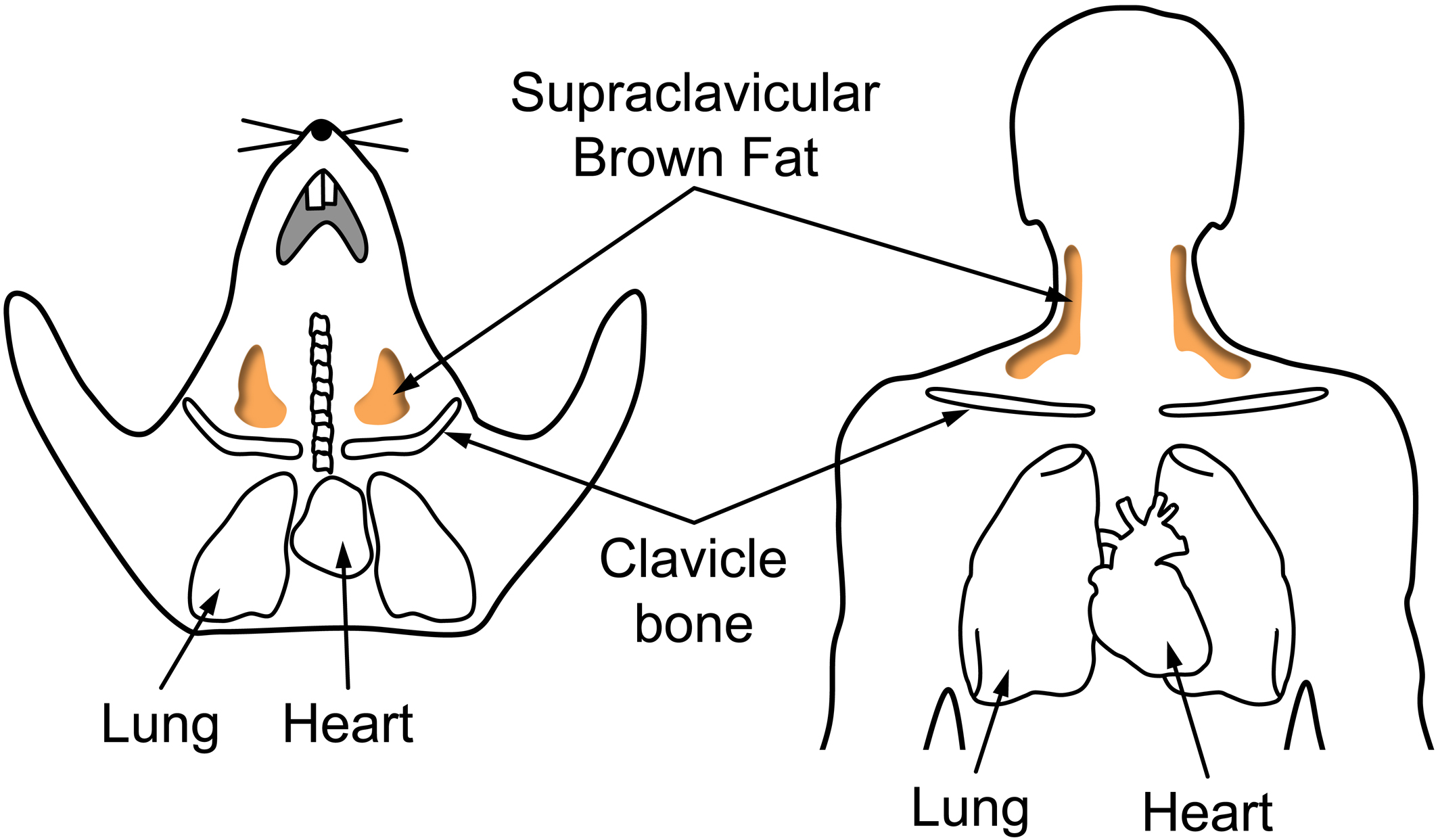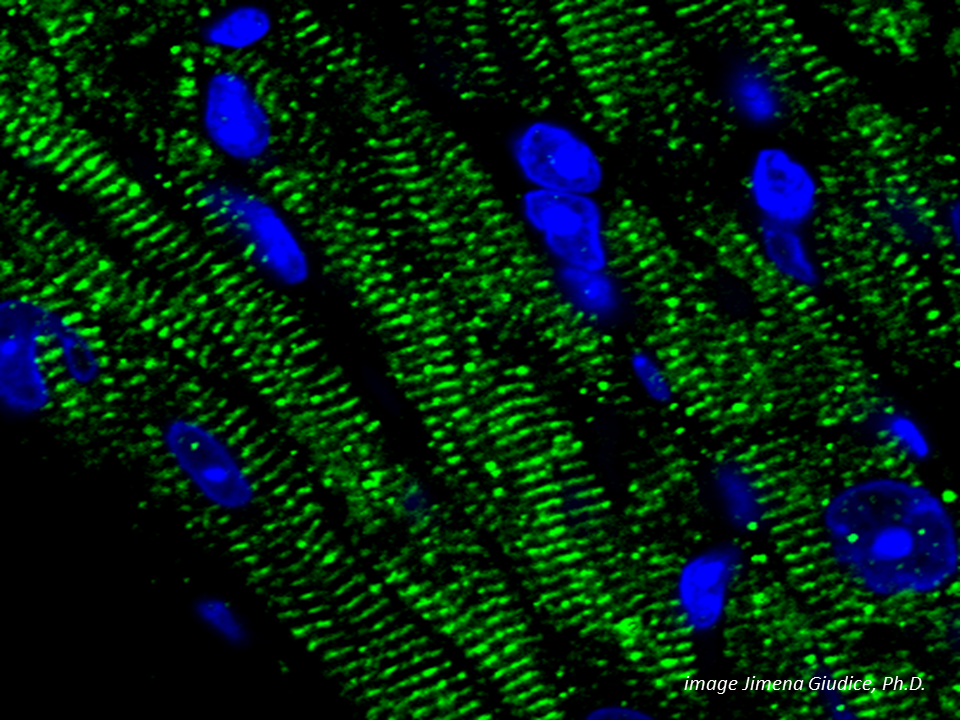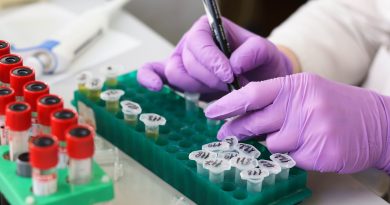A mouse model of human brown fat
When it gets cold around you, your body turns up the heat to maintain its normal temperature. The heat is produced by brown adipose tissue, or brown fat, which also plays a role in how the body uses glucose and fat. However, how brown fat carries out its functions both in health and disease is mostly still a mystery, in part because of the lack of an appropriate animal model.

In her lab at Baylor College of Medicine, Dr. Miao-Hsueh Chen, assistant professor of pediatrics and nutrition and the USDA/ARS Children’s Nutrition Research Center at Baylor and Texas Children’s Hospital, has discovered that mice seem to be natural models of human brown fat.
“Brown fat contains adipocytes, cells that are rich in small fat-filled droplets and in energy-producing structures called mitochondria. Brown fat adipocytes use fat and glucose as sources of energy,” said Chen. “In mice, brown fat that is activated to produce heat markedly affects the energy balance. For instance, mice housed at temperatures below their normal body temperature (20-22 degrees Celsius) would need to consume 60 percent more food to maintain their normal temperature than mice housed at 30 C. Other experiments have shown that when brown fat is dysfunctional or absent, mice decrease their energy expenditure and become obese.”
A mouse model of human brown fat
Studies have indicated that most brown fat in mice is on the back, between the shoulder blades. In people, however, the main depots of brown fat are located above the collar bones and deep in the neck. Scientists think that what they learn by studying mouse brown fat might not be applicable to people because mouse and human brown fat are at different locations. In the search for a better mouse model, Chen and her colleagues analyzed mouse embryos and found brown fat surrounded by muscles in the neck, including a brown fat depot located above the collar bones, the same location of main human brown fat that had not been described before.

“Further studies showed that adult mice also have brown fat above the collar bones,” Chen said. “This is important because studies will be carried out mostly in adults. In addition, mouse brown fat in the collar bone is morphologically similar to human brown fat in the same location, produces compounds involved in the production of heat and expresses genes similar to those expressed by human brown fat.”
Mouse brown fat can change metabolism
In collaboration with Dr. Kristin Stanford, assistant professor of physiology and cell biology at Ohio State University Wexner Medical Center, the research team carried out brown fat transplantation experiments in mice.
“For several years, I’ve been interested in how to combat obesity and improve metabolic health,” Stanford said. “A few years ago, my lab developed a transplantation model looking at the effects of increasing brown fat above the shoulder blade in mice, and we saw a dramatic improvement in metabolic health. When Dr. Chen showed me her data identifying brown fat above the collar bone in mice, I was excited to collaborate and apply our transplantation model.”
When the researchers increased the amount of brown fat above the collar bone by transplanting more of it into healthy mice, they saw improvement on the animals’ glucose tolerance. This shows that “this brown fat depot, which is remarkably similar to the main brown fat depot in humans, can be metabolically beneficial,” Stanford said. “This study highlights how important this tissue most likely is in humans.”
“I am most excited to bring this model to scientists in the field so they can use it to study brown fat,” Chen said. “This model is the first step to improve our understanding of the role of human brown fat in metabolic processes. The model offers the possibility of carrying out studies that might result in treatments to reverse or prevent diseases such as type 2 diabetes and obesity.”
Read all the details of this study in the Journal of Clinical Investigations Insight.
Other contributors to this work include Qianxing Mo, Jordan Salley, Tony Roshan, Lisa A. Baer, Francis J. May, Eric J. Jaehnig, Adam C. Lehnig, Xin Guo, Qiang Tong, Alli M. Nuotio-Antar, Farnaz Shamsi Yu-Hua Tseng.
The authors are affiliated with one of more of the following institutions, Baylor College of Medicine (BCM), The Ohio State University Wexner Medical Center, Rice University and Harvard Medical School.
This study was supported by USDA/ARS CRIS 3092-5-001-059, National Institutes of Health (NIH) P30-DK079638, the American Heart Association 16GRNT30720003 and NIH K01-DK105109. RNA sequencing and data analyses were supported in part by the Genomic and RNA Profiling Core at BCM with funding from the NIH Center grant (P30-DK079638). TEM analyses were supported by the Integrated Microscopy Core at BCM with funding from the NIH (HD007495, DK56338 and CA125123).



